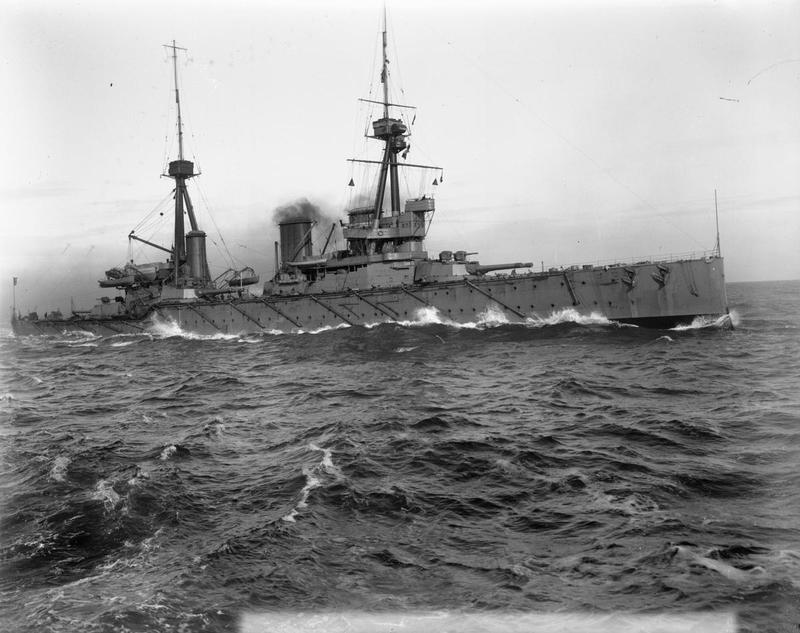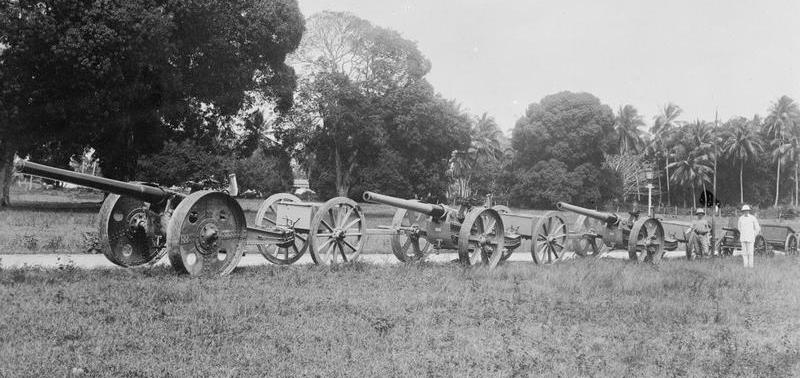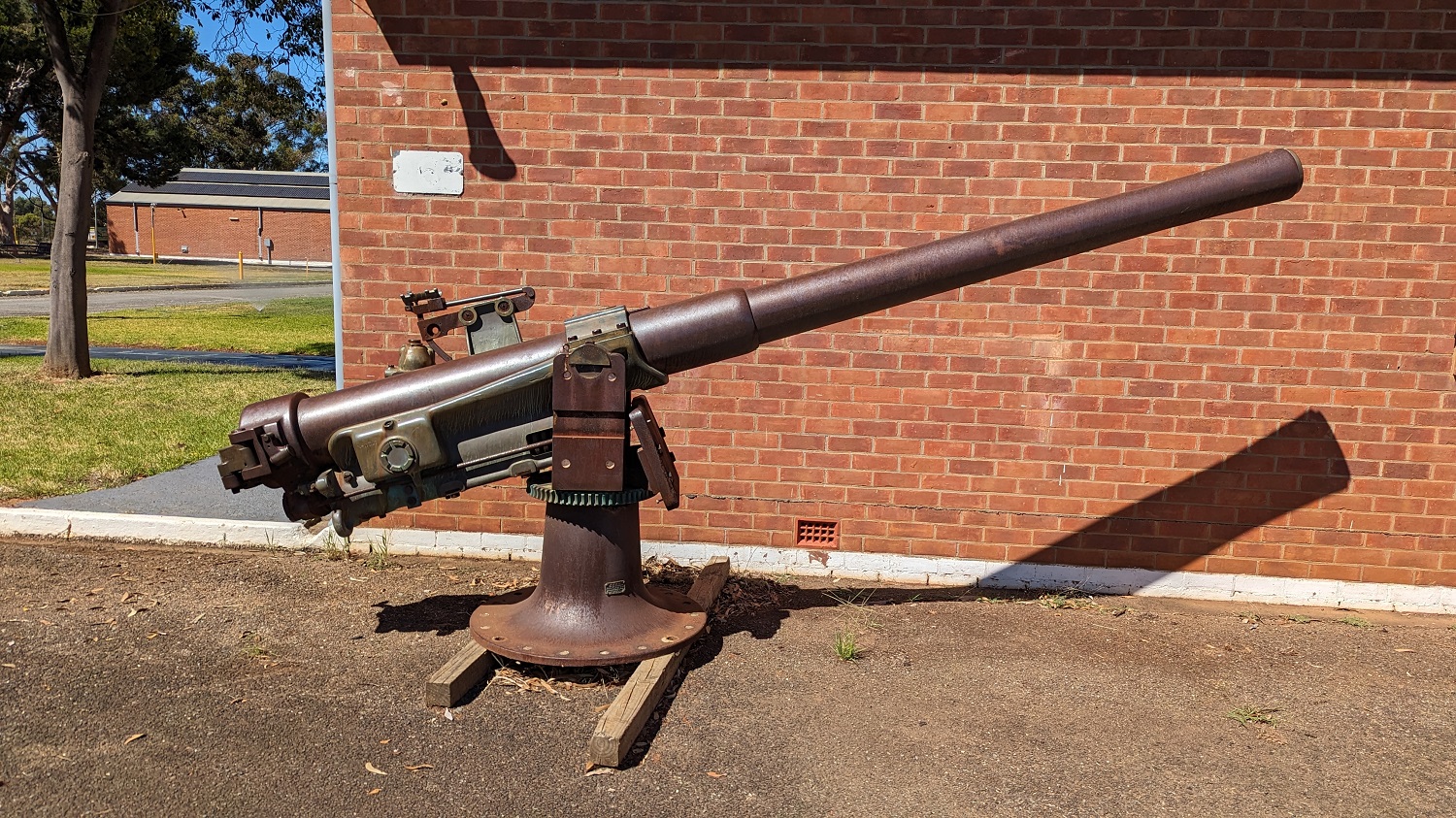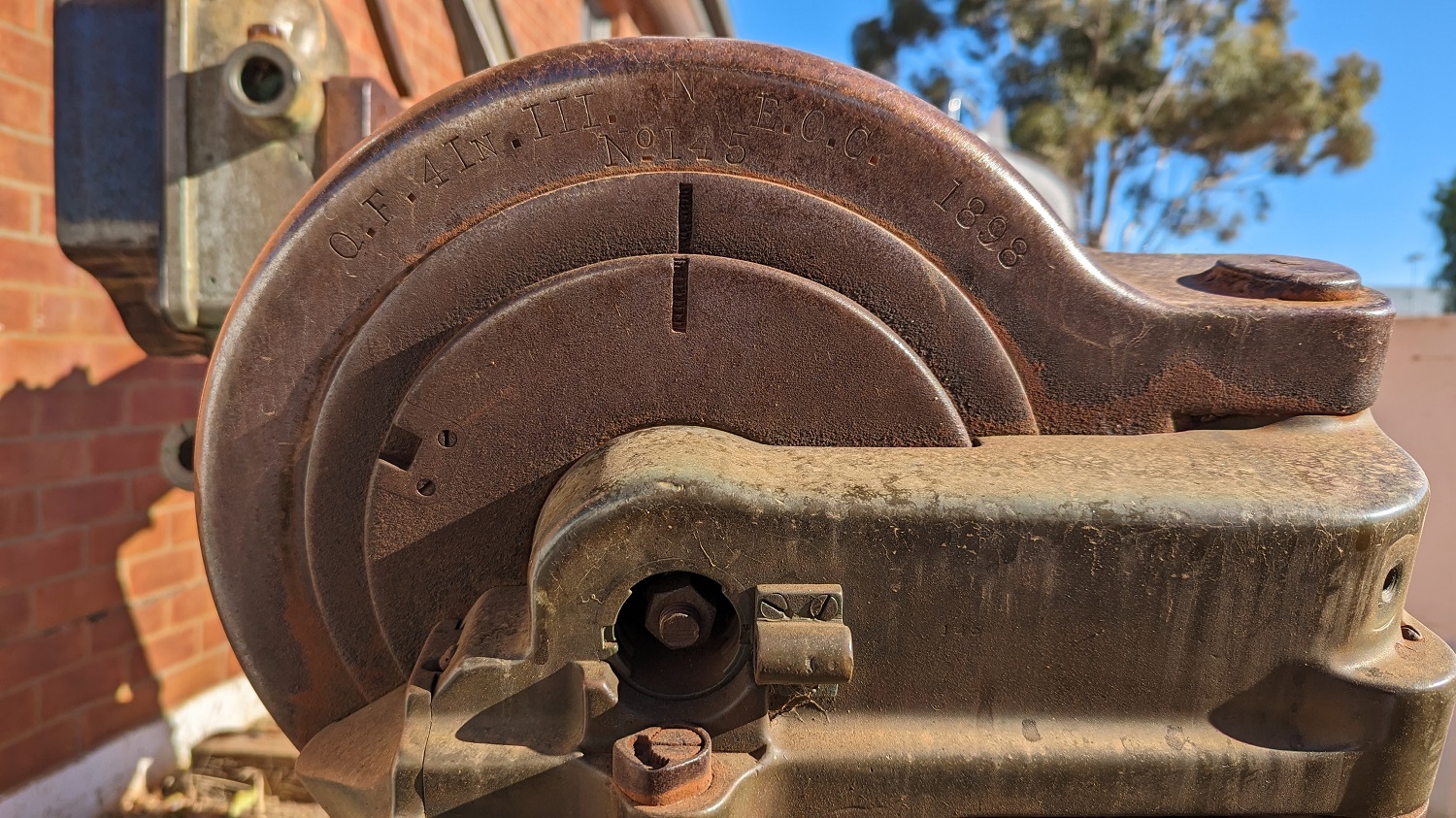
This gun was originally designed for the small cruisers of the 1890s. Later, after the successors to Lord Fisher decided that the 3"/50 (7.62 cm) secondary weapons of HMS Dreadnought were too small a caliber to be effective as an anti-torpedo boat gun, the 4"/40 (10.2 cm) was selected to arm the Invincible class battlecruisers. However, even these guns were found to be too weak and they were in turn replaced with by the more powerful 4"/50 (10.2 cm) Mark VII on later capital ships and finally by 6"/45 (15.2 cm) guns on the last "super dreadnought" designs of the World War I period.
After HMS Pegasus was sunk by the German cruiser Königsberg in 1914, six of her guns were salvaged and then used in Africa as field artillery and in coastal defenses.
During World War II, many of these guns were used on minor warships and a few of the older destroyers. Some were also employed in coastal batteries.
The Mark I and Mark III had similar ballistic performance, but differed in construction. The Mark I had an A tube with short chamber liner, half length wire, full length jacket and a screw breech ring connected the jacket to the breech bush over the A tube. Mark IA differed in that the A tube was thicker over the front of the chamber. The Mark III had an A tube, wire of reduced length, B tube and jacket with a screwed C hoop connecting them. Ten Mark I, eight Mark IA and 261 Mark III guns were manufactured. There were also seven Mark I/III built like the Mark III but with the breech ring and bush as the Mark I. Five of these were later converted entirely to the Mark III design and then designated as the Mark III*.
The Mark II was a trunnioned gun of the same performance as the Mark I. Eight of these guns were produced to rearm the old battleship Temeraire and the paddle steamer Sphinx.
| Designation | 4"/40 (10.2 cm) QF Marks I, II and III |
|---|---|
| Ship Class Used On | Invincible class, Amethyst and Pelorus light cruiser classes, some sloops and gunboats of the 1890s |
| Date Of Design | About 1894 |
| Date In Service | 1896 |
| Gun Weight | 2,952 lbs. (1,339 kg) |
| Gun Length oa | 165.3 in (4.199 m) |
| Bore Length | 160 in (4.064 m) |
| Rifling Length | 143.5 in (3.645 m) |
| Grooves | 24 |
| Lands | N/A |
| Twist | N/A |
| Chamber Volume | 213 in3 (3.49 dm3) |
| Rate Of Fire | about 8 - 10 rounds per minute |
| Type | Separate |
|---|---|
| Projectile Types and Weights | HE: 25 lbs. (11.3 kg)
HE: 31 lbs. (14.1 kg) |
| Bursting Charge | N/A |
| Projectile Length | N/A |
| Propellant Charge 1 | 3.56 lbs. (1.6 kg) Cord 15
5.11 lbs. (2.3 kg) MD16 |
| Muzzle Velocity | Small HE: 2,370 fps (722 mps)
Large HE: 2,300 fps (701 mps) |
| Working Pressure | N/A |
| Approximate Barrel Life | N/A |
| Ammunition stowage per gun 2 | Invincible: 100 rounds
Others: N/A |
| Elevation | Distance |
|---|---|
| World War I Range @ 20 degrees | 9,600 yards (8,780 m) |
| Designation | Single Mountings
Amethyst (12) and Pelorus (8): PI Invincible (16) 1a: PI* |
|---|---|
| Weight | N/A |
| Elevation | PI: -10 / +20 degrees |
| Elevation Rate | Manually operated, only |
| Train | 360 degrees |
| Train Rate | Manually operated, only |
| Gun recoil | N/A |
- ^Invincible was sunk with these guns but Indomitable was rearmed with the 4"/45 (10.2 cm) Mark VII in April 1917 and Inflexible was rearmed with the 4"/45 (10.2 cm) Mark IX in July 1917.



"British Battleships of World War One" by R.A. Burt
"Warship Special #1: Battlecruisers," "Technical Topics No 5: Cordite" article in "Warship Volume II" and "British Naval Guns 1880-1945 No 18" article in "Warship Volume X" all by John Campbell
"Battlecruisers" by John Roberts
25 February 2007 - Benchmark
10 January 2009 - Added remark concerning tubular cordite
12 February 2012 - Updated to latest template and added mounting information
03 February 2014 - Added ammunition stowage information, photograph of Inflexible and note about rearming of Indomitable and Inflexible
13 May 2014 - Added note concerning HMS Pegasus along with photograph of her salvaged guns
04 August 2024 - Converted to HTML 5 format and added museum photographs
